
Siberian Cossack Cavalry
The Siberian Host was mostly cavalry. They traditionally fought with a lance in the front rank and sabre in the rear.
1st Siberian Cossack Regiment
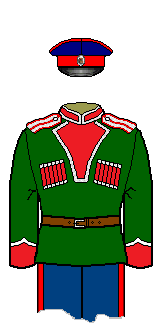 |
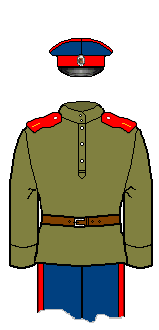 |
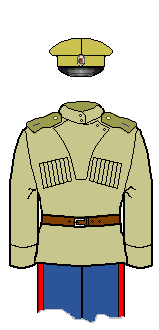 |
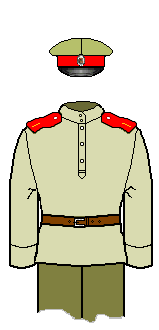 |
| Officer, full 1913 parade uniform | Trooper | Trooper, field dress with ermakovka | Trooper field dress |
The Host colour for the Siberian Host was red.
WWI field dress would have all the coloured clothes replaced by khaki, but the Cossacks were known to retain their coloured items.
The Siberian Host was noted for wearing the ermakovka, which was a gimnastërka with a fabric covering of the shirt opening that had been made non-regulation before 1914. It made a reappearance during WWI as standards loosened, and more so during the Civil War. Photos show the most senior officers wearing the dress version, but how often this appeared on the battlefield is doubtful.
Uniform Details
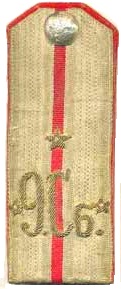 |
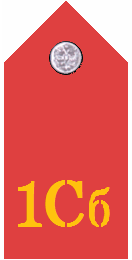 |
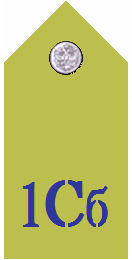 |
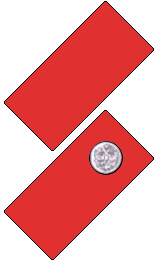 |
|---|---|---|---|
| WWI Lieutenant in the 9th Siberian Cossack Regiment | Shoulderboards: Trooper | Shoulderboards: trooper field version | Greatcoat collar tabs |
In WWI dress shoulderboards were red and the unit monogram in yellow for troopers. The cipher was the regimental number plus "Сб" for Siberia. Buttons and officer lace were silver. Officer's monogram and rank markings were in gold. Field shoulderboards had the number stencilled or inked in dark blue.
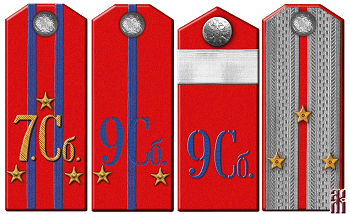 kolchakiya.ru has a different scheme in the details. Some of their examples are shown to the left.
kolchakiya.ru has a different scheme in the details. Some of their examples are shown to the left.
The base is red, the buttons and lace are silver, and the cipher is the same. However they show some ciphers in dark blue, which officially was only used for the khaki side in WWI.
Also many officer boards shown have red marked with blue rather than silver lace (two leftmost), in the manner of the low visibility version many officers used late in WWI. This might have been due to a shortage of lace perhaps.
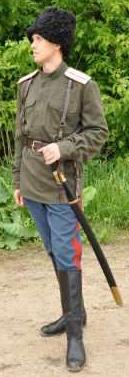 Fur hats had a red cloth crown, with white cross for officers. They ranged from fairly sedate versions through to very large shaggy ones.
Fur hats had a red cloth crown, with white cross for officers. They ranged from fairly sedate versions through to very large shaggy ones.
Centred on Omsk, where the supplies for Kolchak's armies came, it is no surprise that from 1919 many Siberia Sotnias were dressed in British uniforms. Elsewhere Russians preferred to retain Russian caps and boots.
All other Siberian regiments would have looked basically similar. To the right is a modern version of what they looked like.
History in the RCW
On 31 July 1918 the 1st Siberian Cossack Regiment had 38 officer, 1,219 sabres and was in the 2nd Siberian Steppe Army Corps.
The regiment was put in the new Combined Cossack Corps in September and took part in the abortive attack on the Tobol. It retreated with the main body in the Ice March.
Far Eastern Army
Quite a few Siberian Cossacks made to Chita in 1920 and were reformed in the Far Eastern Army. They were combined into the Siberian Cossack Brigade in the 1st Corps (Klaving gives it 3 regiments of 1,200 men, but Volkov only two regiments) plus separate Siberian Cossack Regiments in both 2nd and 3rd Corps.
Numbers dropped and by 1921 there was only one Siberian Cossack Regiment in the White army in Primorye. At the end in 1922 there was just a small Siberian Cossack Group in the Composite Cossack Brigade.
Flags
The first nine Siberian Cossack Regiments, except the 6th, received Nikolais in the period before WWI. All followed the same basic pattern: the 1st, 2nd and 3rd regiments had Alexander ribbons and the slogan: "1582-1909"; the 4th, 5th, 7th and 8th had St. George's stripes with the inscription for the 1904-1905 Japanese war; and the 9th Regiment the bare minimum Nikolai. This is the 1st Regiment's:
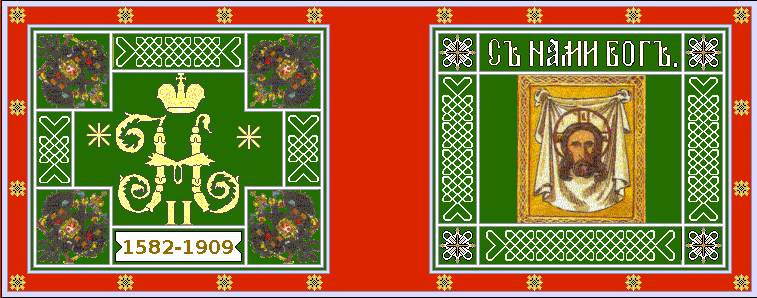
(Two such Nikolais have survived: those of the 4th and 7th Regiments. Many pictures of them make the central panel look as if it should be blue, but the literature is clear that it is dark green.)
The 6th Regiment still had an older pattern flag, with the top half green, the bottom crimson, and a red cross in gold light in the middle. This was a traditional Siberian Host pattern and it would not surprise if it was revived for the Civil War by other regiments.
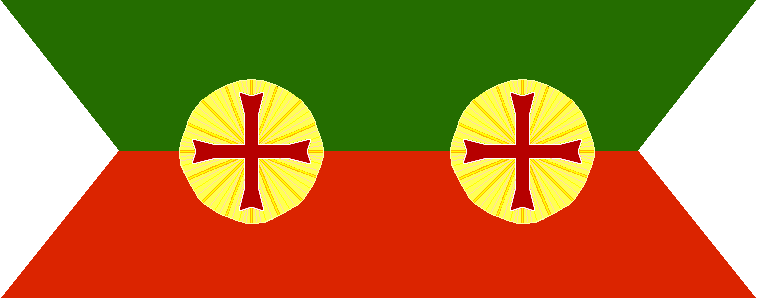
The official battle standard was a red with a white cross to indicate the second host of that colour. The unit's number or cipher was added in yellow in the centre.
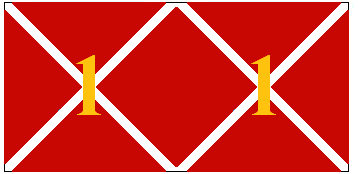
A Civil War era flag for the 1st Siberian Cossack Regiment survives in the Russian Central Armed Forces Museum. It has the red base and white cross, but differs in the shape and arrangement.
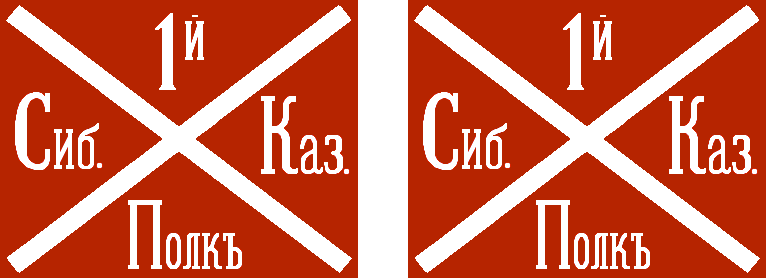
The sotnia flags had red on top, and sotnia colours underneath, with a white bar to indicate the second host of that colour:
